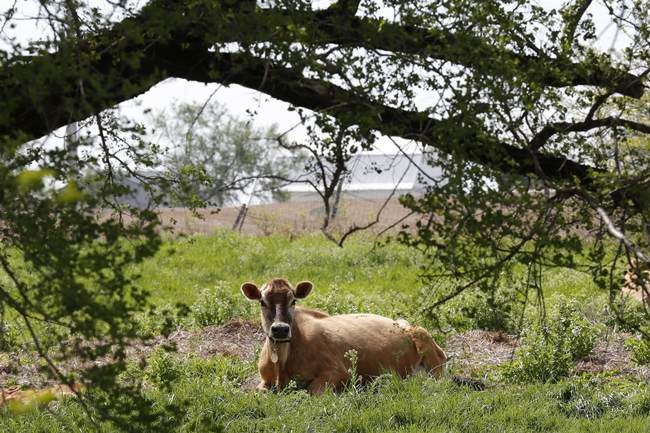
Next time you think you’re having a bad day:
Quite a few years back, when we were much younger, my wife worked for a few years at a large animal agriculture research facility in northern Colorado. One of the studies they were working on was a study of sperm motility in Black Angus bulls, the purpose of which was to develop better artificial insemination (AI) techniques. The… samples involved were taken with the aid of an electric probe that went in the bull’s, uh, exhaust port, which delivered a small shock to the prostate, which resulted in the sample.
One day, my wife came home a couple of hours late. Her hair was all askew, her shirt had a smear of cow manure, and her expression was formidable. When I asked her how her day went, she replied, “You know that electric probe we use to gather samples from the bulls?”
“Yeah,” I said.
“It broke.”
I felt my eyebrows go up. “You mean you had to…”
“MANUALLY,” she snapped, and went into the kitchen for a well-deserved glass of wine.
Now, I told you that story so I could tell you this one. AI in livestock is a very useful tool, as it makes it much easier to carry on bovine elite bloodlines over great distances. Now, in Brazil, we see this phenomenon come to its pinnacle, as a cow deemed to be “closest to perfection” (or “Mais próximo da perfeição,” we can assume) has sold for a staggering $4 million at auction.
Weighing 2,400 pounds, Viatina-19 FIV Mara Movéis is twice as heavy as an average adult of her breed. Viatina-19 is the result of Brazil’s years-long efforts to raise meatier cows so that more people will eat its beef.
Per the Guinness World Records, Viatina-19 sold for the equivalent of $4.38 million in Arandú, São Paulo, Brazil.
Prizewinners are sold at high-stakes auctions — so high that wealthy ranchers share ownership. They extract the eggs and semen from champion animals, create embryos and implant them in surrogate cows that they hope will produce the next magnificent specimens.
“We’re not slaughtering elite cattle. We’re breeding them. And at the end of the line, going to feed the whole world,” one of her owners, Ney Pereira, told The Associated Press after arriving by helicopter to his farm in Minas Gerais state. “I think Viatina will provide that.”
This kind of advance in beef cattle gives cattle breeders a strong feeling of deja moo, as the history of beef cattle has run pretty consistently towards bigger, beefier animals. My Dad raised Black Angus, which are compact animals as beef cattle go, but overall, the trend has been for bigger beasts that yield more beef.
See Related: Where’s the Beef? Drought, Rising Costs Driving US Beef Production to Record Lows
Raging Bull Attacks Woman on Mexican Beach
The market cow-culus is simple; bigger, faster-growing cattle bring higher prices at market. And people will always prefer real beef to any of the poor substitutes, even if protesting that to the anti-meat fanatics is a good example of “in one ear and out the udder.” It’s just pure cow-medy that these people can’t understand this.
Viatina-19 will bring her buyer a bovine bonus: She’s pregnant.
Viatina-19 is now pregnant and Pereira’s is eyeing expansion. The cow’s egg cells have sold to Bolivian buyers and Pereira wants to export to other countries like the United Arab Emirates, India and the US.
Those egg cells, like the sperm cells of a prize bull, will fetch some fancy prices. That’s the neat thing about AI; it allows those champion lines to spread globally. It’s a lot quicker and more efficient than sending actual fully-grown bovines around the world, even if the process of impregnation isn’t as much fun for the animals, as well as precluding any “old bull, young bull” jokes. No ships or air travel for these critters; they are strictly ground beef. That’s befitting Viatina-19, who is, after all, bovine royalty of sorts. Indeed, one might be forgiven for addressing her as “Your Moo-jesty.”
And on that udderly ridiculous note, I return you to your Moo-nday, already in progress.
